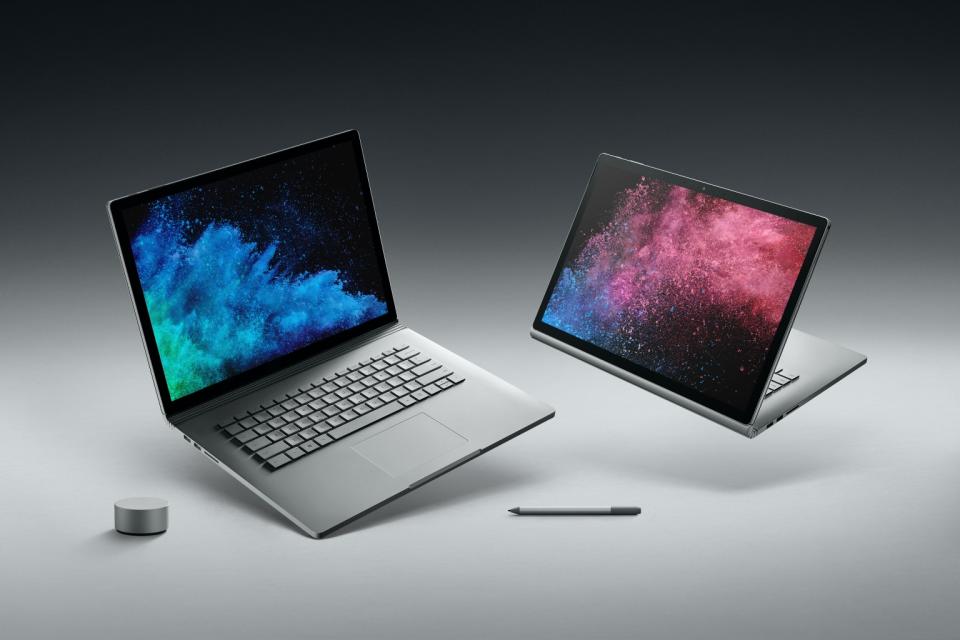How Apple sold me on buying a Windows laptop

Apple (AAPL) finally got me to buy a new laptop. Unfortunately for the tech giant, it runs Windows.
No one thing pushed me to replace my aging 2012 MacBook Air — complete with a T key that had worked itself loose — with an HP (HPQ) Spectre x360. But a slew of small issues made abandoning macOS an easier call than I could have predicted three years ago.
Windows laptops are more versatile
Where MacBook laptops stick to the same basic inputs and outputs of a 1990s PowerBook — type on the keyboard and tap the touchpad, see the results on the screen — the adoption by Microsoft (MSFT) of touch input in Windows 10 has led to most Windows laptops incorporating touch screens.
Two-in-one models also allow you to flip the screen all the way around and use the laptop as a tablet. You have to stand or you’re crammed into an economy-class seat? Windows 10’s tablet mode is your friend, but Apple thinks nobody wants it.
Meanwhile, PC manufacturers have also eschewed Apple’s dogmatic insistence on including only one kind of data connector. New Windows laptops usually include and charge with the same USB-C ports as Apple’s latest MacBooks, but most add a traditional USB port to support a world where almost all connectors — like the computer end of every iPhone’s Lightning cable — use the older standard.
Many also feature microSD Card slots, allowing you transfer pictures from a standalone camera without plugging in an adapter. A few even add bonus features like the privacy filter on this $1,450 HP’s screen, which turns it opaque when seen from the side.
Microsoft’s Windows Hello biometric login — in which the computer recognizes your fingerprint with a sensor or your face with a specially equipped webcam — has also become a table-stakes feature on mid-range Windows laptops.
Apple seems to find affordable computers boring
Meanwhile, Cupertino seems uninterested in applying its engineering talents to cheaper machines. When Apple finally added biometric login to a laptop, the company confined the feature to the $1,799-plus, Touch Bar- and TouchID-equipped MacBook .
Below that, you have a $1,299-and-up MacBook Pro devoid of TouchID and the Touch Bar, then the $1,299-and-up, 12-inch MacBook that continues to punish its users by including only one USB-C port for charging and connecting things.
After that, there’s the MacBook Air that last got a significant redesign in 2015; its continued existence seems to hinge on its ability to give Apple a laptop that starts at $999.
(Don’t even get me started on the desktop. Sub-$1,000 shoppers, Apple doesn’t want your business, or it would have updated the Mac mini at any point in the last three years.)

Some Apple users have found that the iPad Pro — when accessorized with Apple’s Smart Keyboard ($159 or $169 in different sizes) and $99 Apple Pencil — can replace a Mac laptop. After testing both current models, I was struck by how much harder it is to get data in our out of iOS tablets than on a “real” computer with multiple ports.
Note that Microsoft has had no choice but to bring tablet features to laptops: With Windows Phone defunct, it has no mobile platform to make more PC-like.
Windows is still Windows, but macOS isn’t what it used to be
I’ve been using Macs since the late 1980s, including that ugly stretch in the late 1990s when Apple was doomed. I did not choose to buy a Windows laptop unaware of what I’d give up.
Windows 10 looks sharp, but you don’t have to click or tap too deep to find dialogs that look unchanged from the 2007-vintage Vista. Some of Win 10’s core apps still lack basic features: Dear Microsoft, real calendar apps support time zones.
And you can still get inexplicable hardware-versus-software conflicts: As I type this, Device Manager reports that the Spectre’s fingerprint reader is unusable because “Windows cannot load the drivers required.” Good thing Windows Hello’s facial recognition still works fine.
But while I already miss such Mac grace notes as Quick Look previews of files with a tap of the Space Bar and the privacy-promoting options in the latest version of Safari, I feel no nostalgia for having to keep a Mac’s Activity Monitor app open to see which apps have locked up the system by devouring memory. Windows may not be as elegant as the Mac, but it’s somehow become more dependable.
That’s kind of crazy. But it’s also something I’m going to have to think about as I decide how to replace the iMac I’ve used even longer than my MacBook.
More from Rob:
Why so many people still think Facebook is listening to them
Study shows US has slower LTE wireless than 60 other countries
A bill aimed at Facebook’s bogus political ads has some big problems
Email Rob at [email protected]; follow him on Twitter at @robpegoraro.
